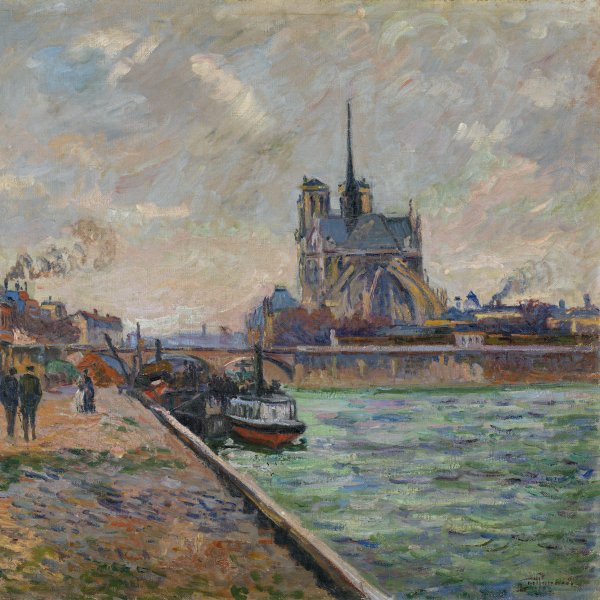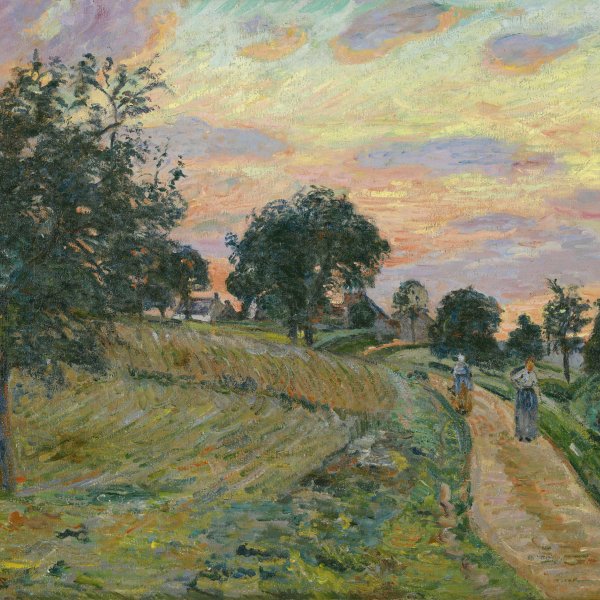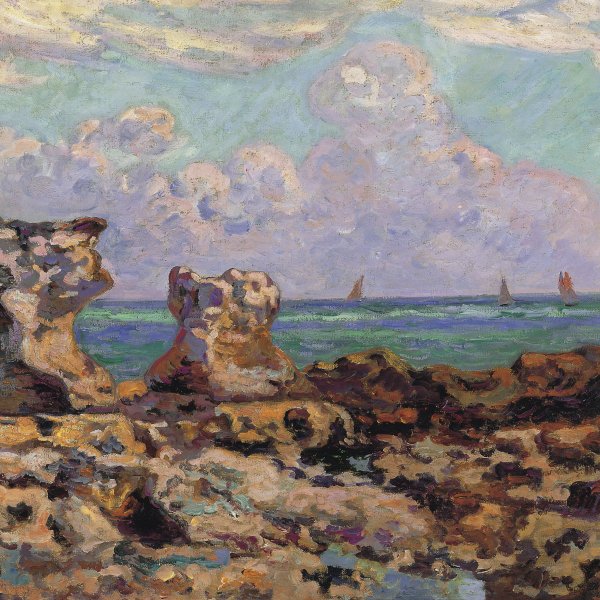Armand Guillaumin
París, 1841-1927
Jean-Baptiste-Armand Guillaumin was born in Paris on 16 February 1841. Soon after his birth, his family moved to Moulins, where Armand received his first schooling. In accordance with his father's wishes, he was sent to Paris to study business and placed under the care of his aunt and uncle. With the family's approval, he also attended drawing courses during this period. He worked for the Orléans Company, while continuing to paint and attending classes at the Académie Suisse where he met Cézanne and Pissarro. In 1868, he was still able to combine his work as a government official in the Ministry of Public Affairs with his painting. He took part in the first Impressionist Exhibition in 1874, showing three landscapes, among them Sunset in Ivry. The paintings he showed at subsequent Impressionist Exhibitions between 1877 and 1886 reveal his close links to the Impressionists.
Guillaumin discovered the town of La Creuse in 1887 and decided to settle there. In 1891, he won 100, 000 French francs in the lottery, a windfall that enabled him to devote himself exclusively to painting. From this point on, he made numerous visits to Saint-Palais-sur-Mer, Agay, Brittany, and the Auvergne. In 1904 he travelled to the Netherlands which inspired a number of paintings.
Although Armand Guillaumin was regarded as a secondary artist within the Impressionist movement, his paintings are composed in strong, vivid colours, and his images of factory buildings, railway stations, and similar locations are imbued with a convincing atmosphere. His painting lost some of its intensity during his years in La Creuse, with greens and purples becoming more dominant in his palette. Guillaumin died in Paris on 26 June 1927.
Mar Borobia
Guillaumin discovered the town of La Creuse in 1887 and decided to settle there. In 1891, he won 100, 000 French francs in the lottery, a windfall that enabled him to devote himself exclusively to painting. From this point on, he made numerous visits to Saint-Palais-sur-Mer, Agay, Brittany, and the Auvergne. In 1904 he travelled to the Netherlands which inspired a number of paintings.
Although Armand Guillaumin was regarded as a secondary artist within the Impressionist movement, his paintings are composed in strong, vivid colours, and his images of factory buildings, railway stations, and similar locations are imbued with a convincing atmosphere. His painting lost some of its intensity during his years in La Creuse, with greens and purples becoming more dominant in his palette. Guillaumin died in Paris on 26 June 1927.
Mar Borobia







